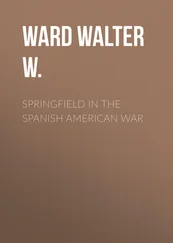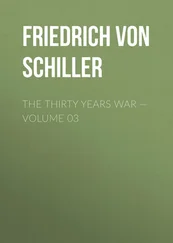On July 31 Kearny issued a proclamation, which declared that he was going to New Mexico “for the purpose of seeking union with, and ameliorating the condition of its inhabitants,” urged them to follow their usual vocations, and promised that all who should pursue this course would be protected in their civil and religious rights; and the next day he addressed Armijo in the same strain, telling him that resistance would not only be in vain, but would cause the people to suffer, and adding that submission would be greatly for his interest and for theirs.9 Captain Cooke of the dragoons was made the bearer of this communication, and with an escort of twelve picked men he went forward under a white flag.16
August 1 the “long-legged infantry,” who were almost able to outmarch the cavalry, left the rendezvous, and on the following day the so-called army was all in motion. After crossing the Arkansas a little way above the Fort, it soon turned off to the southwest, and followed in general the line of the present Atchison, Topeka and Santa Fe Railroad. Before long the troops found on the right a high range of mountains, thrusting up twin peaks into the region of perpetual snow, while the gleaming wall of the far Rockies came every day nearer; and on the left gazed over wide plains—broken with ridge, plateau or butte—which stretched away toward the east, until one could not say where earth and sky met. Near the present boundary of New Mexico began the ascent of Raton Pass; and the men, winding up the rugged valley, discovered most beautiful flowers. But they were hardly in a condition to enjoy them, for the rations—cut down one half or more—consisted of flour stirred up in water, fried, and eaten with a little pork; and the implacable Kearny, an embodiment of energy and resolution, hurried them along by marches that were almost incredibly hard. What lay ahead nobody knew. It was not even certain that the present scanty rations would hold out. But the watchword was always, Forward; and even the magnificent views at the summit of the Pass, where Raton Mountain upreared a series of castellated pinnacles somewhat like those of the Ichang gorge on the upper Yangtse River, attracted but little attention.16
August 15, at the new and unimportant village of Las Vegas began Kearny’s political work. From the flat roof of a house the General—for his commission as brigadier general had now overtaken him—said to the people substantially this: “For some time the United States has considered your country a part of our territory, and we have come to take possession of it. We are among you as friends—not as enemies; as protectors—not as conquerors; for your benefit—not your injury. I absolve you from all allegiance to the Mexican government and to Armijo.10 They have not defended you against the Indians, but the United States will. All who remain peaceably at home shall be safeguarded in person and in property. Their religion also shall be protected. A third of my army are Roman Catholics. I was not brought up in that faith myself, yet I respect your creed, and so does my government. But listen! If any one promises to be quiet and is found in arms against me, I will hang him. Resistance would be useless. There are my soldiers, and many more are coming. You, then, who are in office will now take the oath of allegiance to the United States, and I will support your authority.”16
Tecolote also, at the bottom of the valley, witnessed a scene of this kind; and the next day, crossing the swift Pecos, Kearny followed a similar course at the red adobe town of San Miguel. Here the alcalde said he would rather wait until after the capture of Santa Fe. “It is enough for you to know, Sir, that I have captured your town,” was the stern reply. Doubtless, in their muddled way, the people wondered at this first illustration of liberty; but with characteristic politeness, timidity and guile they wrinkled their faces as if pleased. In spite of orders and sentinels the fields of waving corn, full of ears just prime for roasting, suffered a little; but Kearny paid for the damage, and that at least was appreciated.16
By this time officers sent forward to learn the state of public sentiment at the city of Taos, an important seat of the Pueblo Indians, and at Santa Fe had returned with unwelcome reports, and several American residents had brought warnings of danger. The activity of Mexican spies—kindly treated when captured, and in some cases released at once with friendly messages—proved that Armijo was alert; and on August 14 his reply to the note sent by Cooke, while proposing that Kearny halt and that negotiations be opened, informed the General that the people were rising en masse to defend the province, and that Armijo would place himself at their head.11 Fifteen hundred dragoons had reached or were near Santa Fe, it was reported; and at a natural gateway, cutting a ridge about four hundred feet high, a hostile force was said to be waiting. On hearing this news all the weary men and their drooping steeds came to life. The banners and guidons were unfurled. “To horse!” blared the trumpets; “Trot! Gallop! Charge!” And with sabres glittering under a brilliant sun the troopers dashed round a sharp turn into the pass, while the artillery thundered after them, and the infantry scrambled over the ridge. Not an enemy was found; but the reports agreed that Apache Canyon, some distance farther on, would be stiffly and strongly defended.16
This was extremely serious news. To march nearly 2000 soldiers eight or nine hundred miles through a wilderness involved fearful risks, and the expedition was now at the breaking point. The men had become travel-worn and half-starved; many, if not all, were suffering from the effects of the water, loaded with acrid salts, which they had been drinking; the horses generally were on their last legs; and hundreds of horses and mules actually could not march another day. It had already been necessary to attach cattle to the ammunition wagons, and the cannon were now dragged along with extreme difficulty. The provisions had practically been exhausted. And here lay a defile seven or eight miles long, guarded by several thousand militia, a force of regulars and considerable artillery.16
As these facts indicate, the New Mexicans did not seem willing to justify Polk’s expectations. Whatever Armijo’s own opinions, public sentiment appeared to demand action. There existed a good deal of warlike spirit in the province, and naturally the prospect of an armed invasion excited resentment. The ignorant and suspicious people were easily persuaded, after their hard experience under Mexican rule, that the Americans were coming to take their property; and the priests added, that besides abusing the women these ruffians would brand them on the cheek as mules were branded. August 8 the governor therefore issued a proclamation, summoning the people to take up arms in the cause of “sacred independence”; the prefect of Taos and presumably other local authorities followed his example; and several thousand of the people,12 Mexicans or Indians, many of them armed only with bows and arrows, clubs or lariats, but all apparently eager to fight, were placed at Apache Canyon under Colonel Manuel Pino.16
At this juncture, however, Cooke, a Chihuahua merchant named González and one James Magoffin, a jovial and rich Kentucky Irishman, prominent in the caravan trade and long a resident of Chihuahua, arrived at Santa Fe. Magoffin had been introduced by Senator Benton to Polk, and after some talk had consented to act as a sort of informal commissioner to Armijo in the interest of peaceful relations. He now argued, according to the very reasonable statement of the governor, that American rule would enhance the price of real estate and make New Mexico prosperous.13 Undoubtedly he dwelt upon the impossibility of successful resistance; and probably he suggested—though Armijo’s avarice required no hint on this point—that should cordial feelings prevail, the duties on the approaching merchandise, a fortune in themselves, would be paid at the Santa Fe customhouse, where the governor could handle them.16
Читать дальше












